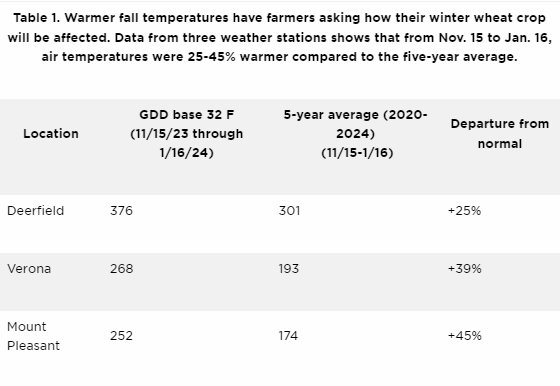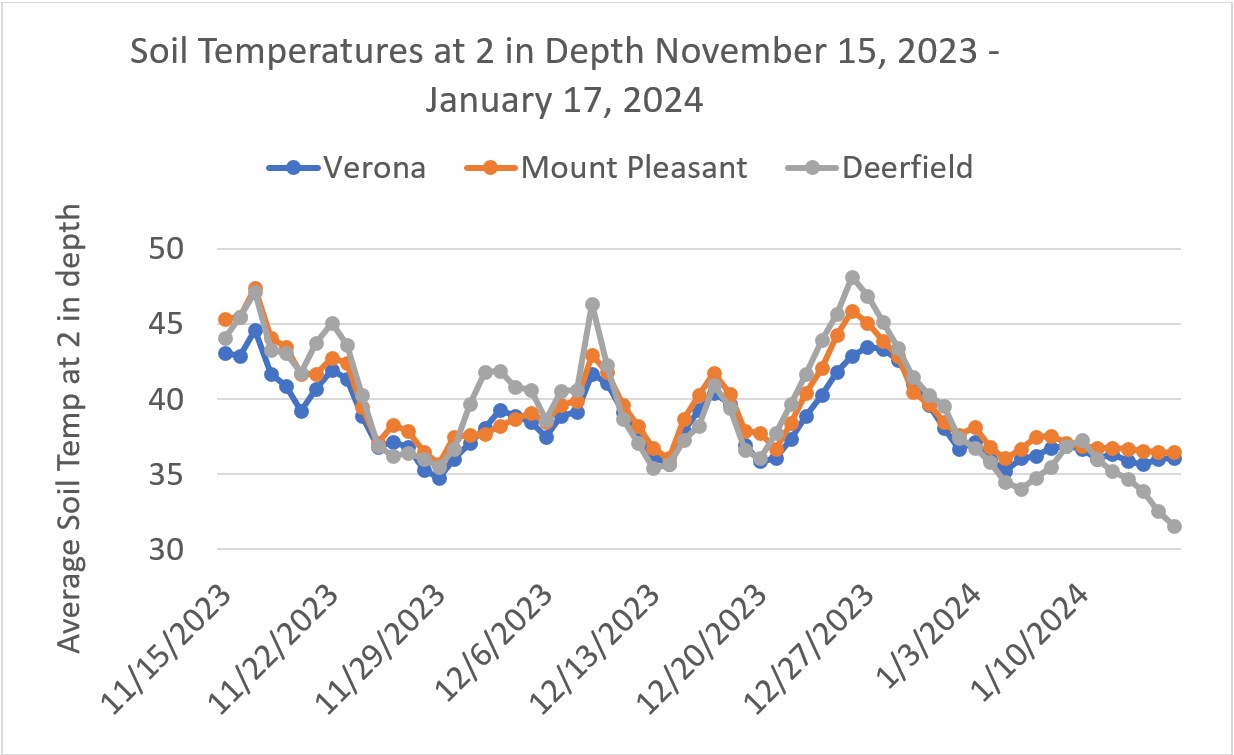Hardening off is a different physiological process the affects cold tolerance of the wheat. Hardening off begins once the temperature of the crown (growing point) dips below 48 F. Water in the meristematic tissues is replaced by more dense carbohydrates that are less prone to freezing. Winterkill occurs when the water in the crown freezes. When water freezes, it expands, rupturing cell walls which can permanently damage the crown. If this is severe enough, the plant can die. Remember that in Michigan, wheat crowns remain below the soil surface until spring. Therefore, air temperatures are not a good indicator of crown temperature. Instead, we need to look at soil temperatures at a 2-inch depth.
Now onto the question of how the warmer weather has been affecting the wheat crop. From Table 1, we can see that air temperatures have been warmer since Nov. 15. Across all three locations, growing degree-day (GDD) accumulations ranged from 25% to 45% higher compared with the five-year average. This usually leads to warmer soil temperatures (where the crown is at). From Figure 1, we can see that soil temperatures since Nov. 15 have bounced around between the mid-30s and mid-40s. At the Deerfield/Blissfield location soil temperatures reached 48 F on Dec. 27. Since then, soil temperatures have declined, indicating the vernalization and hardening off processes have resumed.
The arctic blast that arrived on Jan. 14 also brought snow. Snow helps to insulate the ground from extreme cold air temperatures. Notice in Figure 1 that the soil temperatures at the Deerfield location dipped more than the others. This is likely due to the fact southeast Michigan received less snow cover.


In terms of hardening off, it looks like that process has been moving along steadily since Dec. 27 without many increases in soil temperature. Wide swings in the temperature of the crown can reduce cold hardiness and increase the risk of winterkill. So far with the snow cover we have, most of the Michigan winter wheat crop is still hardening off and in good shape.
There would be more of a concern of wheat potentially falling victim to winter kill if soil temperatures at a 2-inch depth increased over 48 F for a prolonged period and then cooled back down, as this could affect the cold hardiness of a plant. We will have to see how the rest of the winter goes. If you have more interest in how that process works, Kansas State University wrote a nice article when they were experiencing temperature fluctuations in 2017.
What is unique this year is that because of the warmer temperatures we have seen an accumulation of GDD across the state since Nov. 15, so this year even the late-planted wheat may have put on more growth than anticipated.
Source : msu.edu